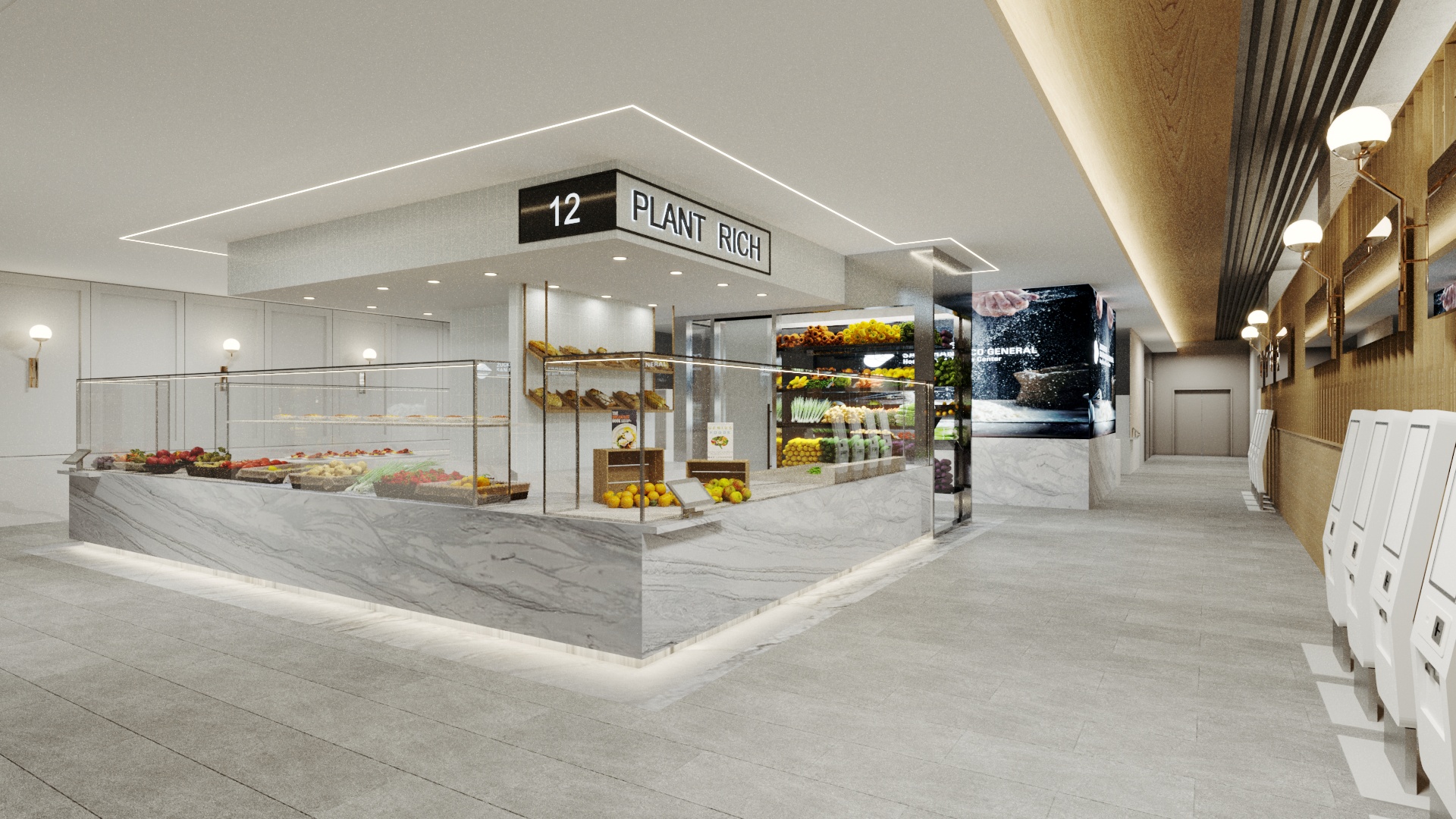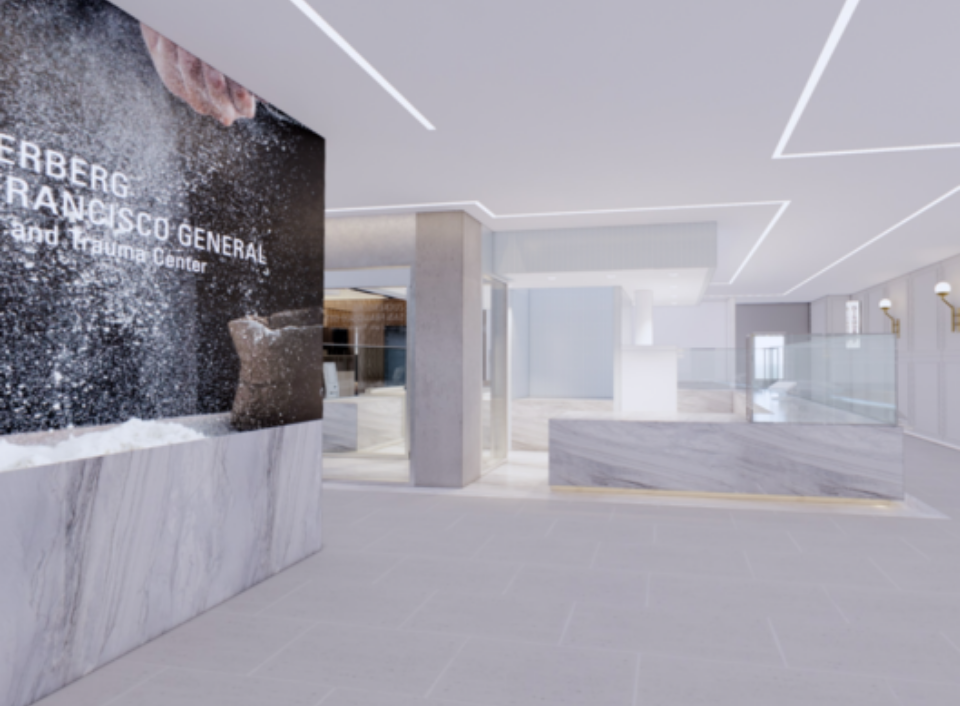Photo Credit: Studio Goga
The built environment can have a positive effect on the overall state of a person’s physical and emotional wellbeing. Nowhere is this more important than in a healthcare facility. The contemporary environment of care recognizes that, while the physicality of hospitals must support the effective delivery of care, they are in and of themselves tools in the healing process, supporting wellness through psycho-physiological effects. These effects are important for all building users – patients, visitors, and staff.[1]
Healthcare organizations and AEC firms have taken evidence-based design research and expanded it beyond patients with the recognition that the physical environment also affects staff, doctors and visitors. Many factors are involved in the built environment, including lighting. A growing understanding of the effects of light on human biology, as well as the importance of light for helping to create pleasant, non-institutional environments, has created a desire for hospital lighting systems to provide flexibility in spectral output and control. With a focus on both patient and staff wellness, the AEC industry and healthcare facility managers are looking for thoughtfully configured lighting that balances visual and circadian needs and promotes healing outcomes.
More institutional lighting approaches of the past are also being replaced. The former clinical feel of corridors lined with fluorescent wraparound fixtures is giving way toward architecturally integrated LED fixtures that provide indirect light, resulting in soft ambient lighting that accentuates the architecture rather than competing with it.
Healthcare Lighting and Patients
Much has been studied and written about the importance of lighting to the health of patients. In a 2016 poll of hospital administrators, more than 86 percent of respondents said that patient satisfaction was “very important” in driving design changes to health facilities and 63 percent said they would include patients and the public in the design process.[2]
Lighting figured prominently among the top ten features being implemented to improve patient experience: 51 percent were including individual room controls of systems such as lighting, window shades and temperature, and 49 percent were including specialty lighting for added comfort and safety.[3]
The evolution of hospital lobby design is also part of a larger movement to improve the patient experience, increase the flexibility of room design, and incorporate new technologies.[4] One way to improve comfort and satisfaction in a hospital lobby is by designing the space with hospitality design features in mind as well as attractive finishes, comfortable and varied furnishings, and even concierge services to answer questions and help patients navigate the facility.[5] Architectural lighting complements these design trends, however, patients aren’t the only people in the hospital, which is why architects and designers are also focusing on the needs of doctors, staff and visitors.
Supporting Healthcare Workers
The United States is facing a nursing shortage crisis, with recent estimates projecting one million registered nurse vacancies by 2024. At the same time, healthcare is projected to add more jobs than any other sector due to an increasingly aging population and greater demand for healthcare services.[6] Given that a single hospital might spend millions to recruit and retain staff, hospital designs – including how lighting is used – may play a role in attracting and maintaining high-performing and satisfied caregivers.
The emotional and physical well-being of healthcare workers was always stretched; this past year only magnified the enormous strains on this work force. Management needs to consider the implications for “wellness in the workplace” when that workplace is a healthcare facility. Since lighting plays such an important role with patients’ recoveries and shortening stays, it can also positively affect healthcare staff.
Lighting and areas designed specifically for staff to rejuvenate can support their circadian rhythm, and improve their performance and mental health. There is research and evidence that back this theory. The Department of Energy conducted research and concluded that proper lighting can help lower staff stress and burnout.[7] Additionally, a Yale study conducted at the height of the pandemic identified one factor that can help ease stress and the longer-term burnout that can result: a strong sense of identification with a team.[8] While this information can be used by many hospital departments, it is also critical to designers.
Architectural Healthcare Lighting in Action
Zuckerberg San Francisco General Hospital
San Francisco, CA

As the food service vendor contracted by Zuckerberg San Francisco General Hospital, Fedele Bauccio, CEO and cofounder of Bon Appétit Management Company, had a vision for the redesign of the hospital’s café, terraces and conference rooms: marrying design with great, authentic sustainable food to create new experiences for the doctors, nurses, staff and visitors. These renovated spaces will enhance the senses through a design intended to complement the group physically and emotionally. Bauccio believes that this cross fertilization will have a tremendous impact on guests’ experiences.
With completion slated for 2022, this new state-of-the-art cafe includes a teaching kitchen and a custom glass walk-in fridge that highlights a plant-rich concept. There are multiple food stations, dining areas and co-working spaces that open up to a beautiful outdoor herb garden and a conference center.

Bauccio selected San Francisco-based lighting designer, Gordana Jordanovska/Studio Goga as both the designer and lighting designer for the renovation. Jordanovska used lighting to guide people through the space, bring forth the rich colors displayed at the food stations, and impart energy and life into every conference room and dining area. She wanted the area to be light and airy, and a space to decompress and relax. The Heroes Lounge is bright and open with a beautiful view of the garden and the outdoors. The renovation also incorporates LED digital walls in the hospital’s common area.
Linear luminaires are installed for wayfinding throughout the café and in the entrance on the floating ceilings, making the entrance extremely impressive. The lighting also reduced installation costs.
“I didn’t have to disrupt the existing HVAC system with retrofits. The luminaires selected installed cleanly into 5/8” drywall so no major ceiling re-work was required. It’s a clean finish, which is exactly what I needed,” commented Jordanovska.
Other plaster-in 24VDC luminaire systems were recessed into the drywall also without joist modification. These luminaires elegantly highlight the ceiling perimeters while emitting smooth and continuous ambient illumination. To create additional unique design elements, Jordanovska selected fixtures that are artfully suspended to create beautiful form, function and style.
Jordanovska worked closely with Bauccio to create the right environment for dining, lounging, relaxing and recharging.

“What we’ve all been through over the course of the past year has been unprecedented, and has only shown a spotlight on how important it is for the hospital environment to be a healing one. I am working closely with Fedele who believes so much in bringing health, wellness and true healing to the hospital staff and their many patients,” added Jordanovska.
Gregory Kay is president and founder of PureEdge Lighting. He has worked in the lighting industry for over 30 years as an accredited lighting designer, engineer and entrepreneur and has received countless awards for his innovative design work. He may be reached at greg@pureedgelighting.com. For more information, please visit: https://www.pureedgelighting.com/
[1] https://www.energy.gov/sites/prod/files/2020/02/f71/ssl-davis-etal-2020_HERD_nurses-satisfaction-patient-room-lighting.pdf (accessed November 9, 2020).
[2] 2016 Hospital Construction Survey, Health Facilities Management and the American Society for Healthcare Engineering and American Society for Healthcare Engineering.
[3] Ibid
[4] https://hmcarchitects.com/news/hospital-lobby-design-trends-and-their-place-in-design-2020-05-06/ (accessed July 19, 2021).
[5] Ibid
[6] https://www.contractdesign.com/practice/healthcare/designing-health-light-circadian-rhythms-health-caregivers/ (accessed July 14, 2021).
[7] Evidence-Based Design for Healthcare Lighting: Where’s the Evidence, DOE Healthcare Lighting Webinar Series
[8] https://insights.som.yale.edu/insights/identifying-with-team-helps-prevent-stress-and-burnout-among-healthcare-workers (accessed July 14, 2021).



